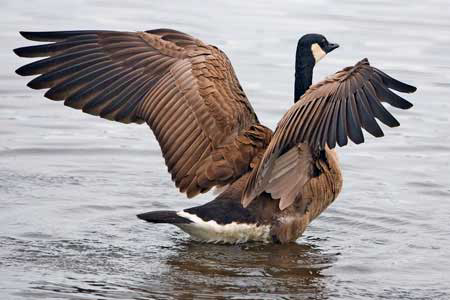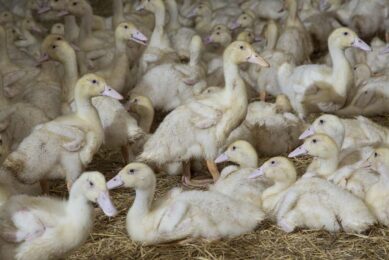WUR examines HPAI spread through wild birds

Birds that spent the summer in Siberia might have been the source of the new bird flu outbreaks in the Netherlands and other parts of Europe, according to Wageningen University researchers.
The water bird Eurasian teal – spotted in the western part of The Netherlands, where Highly Pathogenic Avian Influenza H5N8 was first diagnosed – uses the same breeding grounds in Siberia as birds that migrate to Japan and South Korea. Those Asian countries had outbreaks of Highly Pathogenic Avian Influenza H5N8 earlier this year.
During the HPAI H5N8 outbreaks in South Korea earlier this year (2014) HPAI H5N8 virus was isolated in poultry, but also in wild birds originating from the Donglim Reservoir that is situated in the outbreak area with poultry farms (Jeong et al., 2014).
Donglim Reservoir is one of the most important resting sites for migratory Baikal teal, which overwinter in South Korea, Japan, and northern and Eastern China. HPAI H5N8 viruses were isolated from carcasses of wild birds but also from faeces, originating from the Baikal teal (Anas formosa), mallard (Anas platyrhynchos), coot (Fulica atra) and the bean goose (Anser fabalis).
Mid April 2014 the virus popped-up on a poultry farm in Japan. In the frame work of wild life monitoring in Japan, faecal samples of Bewick tundra swans (Cygnus columbianus bewickii) were taken and tested positive for HPAI H5N8 virus (ProMEDmail, 2014).
The German Ministry of Agriculture announced on 22 November 2014 that a common teal (Anas crecca) tested positive for the HPAI H5N8 virus. The teal was shot outside a risk area installed in Germany around the HPAI H5N8 outbreak on a turkey farm in Mecklenburg-VorPommern (risk area with a radius of 50km).
The above mentioned wild water birds use, among others, breeding grounds in Siberia. The common breeding grounds facilitate the exchange and development of avian influenza viruses among the birds present. After the breeding season, the above mentioned water birds migrate to Europe and to Asia for overwintering. In the countries of destination of the migratory birds avian influenza viruses can be swapped with the resident wild bird populations. The common teal has been spotted this year at several sites in the western part of the Netherlands, the area of the first outbreaks of HPAI H5N8 among commercial poultry.
Source: Wageningen University
CVI researchers Armin Elbers, Ruth Bouwstra en Guus Koch
Join 31,000+ subscribers
Subscribe to our newsletter to stay updated about all the need-to-know content in the poultry sector, three times a week. Beheer
Beheer








 WP Admin
WP Admin  Bewerk bericht
Bewerk bericht